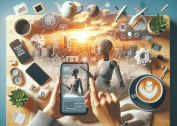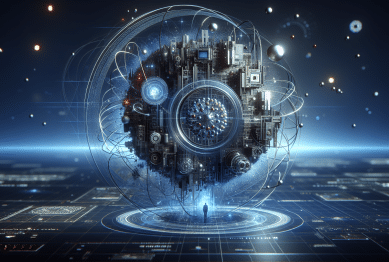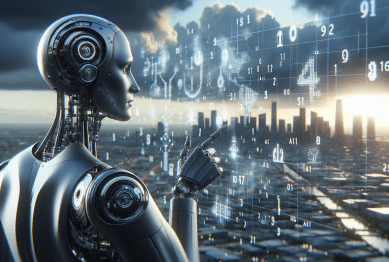Explore how artificial intelligence is revolutionizing daily experiences, from smart homes to medical diagnostics. This guide unpacks emerging trends, privacy considerations, and practical insights so you can better understand where AI is heading and the impact it might have on your world.
How AI Transforms Daily Interactions
Artificial intelligence is no longer hidden in the background of science fiction. Many people interact with AI every day, often without even realizing it. Voice assistants, predictive text on smartphones, and recommendation algorithms on streaming services are only a few examples of how machine learning works behind the scenes. These systems analyze preferences and behaviors to serve up more relevant content and make tasks easier. For instance, a smart thermostat can learn a household’s routine and automatically adjust temperatures for energy efficiency and comfort. What once seemed futuristic now blends seamlessly into mundane routines, powering tools that shape how we communicate, shop, and even relax at home.
In the workplace, AI-driven chatbots and virtual assistants are handling routine inquiries, freeing up human staff for more complex work. Automated processes support scheduling, file management, and customer interaction. When it comes to personal lives, smart speakers help manage home environments, play music, answer questions, and even control lights or appliances on command. These devices keep improving as algorithms learn from continuous human input, highlighting how technology is pushing convenience to new levels. For many, these advances represent the visible side of artificial intelligence in action.
Behind every smart home device is a network of neural algorithms that process languages, predict habits, and adapt behaviors over time. In addition, integration with mobile apps creates a unified experience: think reminders, security updates, or health tracking all coordinated across different gadgets. Innovations like these rely on advances in AI research, focusing on deep learning and data science. As systems become more sophisticated, new opportunities surface for enhancing accessibility and personalization, addressing both unique needs and common challenges in daily life.
The Science Behind Machine Learning
What powers most of today’s AI technologies is a field called machine learning. At its core, machine learning gives software the ability to learn from data and improve performance over time, without explicit reprogramming. Developers use large datasets to train computers on specific tasks—be it translation, object recognition, or complex decision-making. Neural networks, inspired by the human brain’s structure, are often at the center of these advances. They allow machines to identify patterns, adapt to new information, and tackle tasks that were once deemed impossible for computers. The more examples an algorithm sees, the better it can predict or classify future outcomes.
Deep learning, a subset of machine learning, has propelled AI’s capabilities in recent years. These models use many layers of processing to handle unstructured data, such as images, sounds, or human language. This makes applications like facial recognition, voice-to-text conversion, and real-time language translation increasingly accurate. Researchers are exploring new architectures and optimization strategies to improve reliability while reducing errors. Data science—the practice of turning large, raw datasets into actionable insights—is the engine driving both innovation and practicality in AI spaces. Many of the conveniences experienced in consumer tech are directly tied to these behind-the-scenes breakthroughs.
For AI to keep evolving, access to high-quality, diverse, and well-labeled data remains crucial. Machine learning models can inadvertently reproduce human biases or errors present in their training sets. So, experts caution that transparency and robust oversight are essential for responsible progress. Open-source initiatives in machine learning foster better collaboration and peer review, helping avoid some common pitfalls. With regular advances, AI-driven solutions are expected to have even greater presence in health care, finance, and transportation, reshaping what’s possible in the years ahead.
Emerging Trends: Smart Homes, Healthcare, and More
The reach of artificial intelligence has grown beyond digital landscapes to transform everyday environments. In smart homes, AI-powered devices harmonize security systems with lighting, climate control, and entertainment. Motion sensors, facial recognition entryways, and automated cleaning robots introduce a new standard of convenience. Interconnected gadgets share data and adapt to routines, making home life feel intuitive and safe. These advances are fueled by improvements in edge computing, where devices process information locally for faster, more private responses. This elevates user experience while also addressing growing privacy concerns with centralized data storage.
In medicine, AI’s role is expanding rapidly. Algorithms now help analyze medical images to spot anomalies, assist in diagnostic decisions, and even predict outbreaks determined by community health trends. From early detection of eye diseases using retinal scans to advanced cancer screenings, machine learning brings higher precision and efficiency. Digital health monitoring—like wearable biosensors and telehealth apps—empower individuals to track well-being and share insights with care teams. These technologies rely on continual learning from patient data, strengthening outcomes over time when managed responsibly. AI’s ability to detect subtle anomalies fosters innovation in preventative care and treatment planning.
The transportation sector offers more exciting possibilities for AI. Self-driving vehicles, for example, use advanced sensors and real-time analytics to make split-second decisions on the road. Traffic management systems in cities use predictive analytics to reduce congestion. In public transit, AI-powered ticketing and real-time scheduling streamline daily commutes. As smart infrastructure grows more common, cities are leveraging AI for sustainability, reducing waste, and promoting cleaner, more efficient urban living. Future-facing projects will likely see AI as a cornerstone of ‘smart cities,’ bringing the promise of integrated, adaptive, and energy-efficient communities to a broader audience.
Everyday Ethical Considerations with AI
Artificial intelligence brings both tremendous opportunities and unique ethical challenges. As AI systems take on greater roles in personal and public decision-making, concerns about bias and equity arise. Algorithms trained on incomplete or unrepresentative data sometimes reinforce societal stereotypes, affecting hiring tools, loan approvals, and even legal judgments. Leaders in tech are prioritizing responsible development—conducting audits, promoting transparency, and enabling explainable artificial intelligence (XAI) that lets humans interpret how decisions are made. In many cases, oversight boards and interdisciplinary teams review new projects to ensure fairness and minimize risk.
Privacy remains a top concern for households adopting AI-driven devices. Many smart electronics collect sensitive user data to personalize experiences or enhance security. Consumers may not always realize the full extent of data gathering that powers personal assistants or fitness trackers. There’s growing interest in privacy-preserving technologies, including local processing (edge AI) and greater control over data-sharing preferences. Regulations such as the General Data Protection Regulation (GDPR) in Europe have prompted tech companies to adopt more transparent policies and privacy-by-design methodologies, safeguarding users while maintaining the benefits of connected tools.
Transparency builds trust. Organizations are increasingly publishing guidelines and partnering with outside experts to review AI’s real-world effects. Public discussions, ethics forums, and independent audits are vital for informing policy. As artificial intelligence advances, ongoing scrutiny and collaboration among industry, government, and civil society remain essential. The ultimate goal is to design technology that is both powerful and just, balancing innovation with respect for personal rights and shared values. This careful approach will be vital as artificial intelligence becomes a bigger part of decision-making for all ages and backgrounds.
The Road Ahead: What to Expect from AI
Artificial intelligence is advancing quickly, but much remains uncertain about its future trajectory. Many researchers envision AI systems capable of reasoning, adapting, and collaborating even more like humans—a concept sometimes called artificial general intelligence. The reality, however, is that today’s AI excels in specific, narrow applications, while broader intelligence remains a research challenge. In the coming years, software will likely become more adept at integrating with emerging technologies such as quantum computing and the Internet of Things (IoT), opening new realms of connectivity. This fusion could deliver real-time, cross-platform insights unimaginable a decade ago.
Education will play an increasingly crucial role in shaping society’s relationship with AI. Online programs provide foundational training in data science, programming, and ethical practices, supporting a new generation of professionals equipped to design, implement, and oversee evolving technology. Digital literacy initiatives can help diverse communities understand, critique, and make informed choices about AI-powered products. Some universities and organizations now offer accessible learning paths covering responsible AI usage, equipping students and decision-makers to participate in ongoing dialogue about technology’s impact. Such accessibility encourages broader inclusion and more representative perspectives as AI development moves forward.
Ultimately, the evolution of artificial intelligence invites curiosity and adaptability. As AI systems continue their march into everyday life, maintaining a balance between utility, ethics, and human connection will be vital. New challenges—such as safeguarding jobs, ensuring autonomy, and preventing digital divides—require proactive and inclusive approaches. By staying informed and engaging in open conversations about risks, benefits, and safeguards, everyone can play a part in shaping a future where artificial intelligence works for the common good. This is a journey, not a finish line. Learn more, explore frequently, and keep asking questions—because AI is only just beginning its journey into all aspects of daily life.
References
1. European Commission. (n.d.). Ethics guidelines for trustworthy AI. Retrieved from https://digital-strategy.ec.europa.eu/en/library/ethics-guidelines-trustworthy-ai
2. U.S. Food and Drug Administration. (n.d.). Artificial Intelligence and Machine Learning in Software as a Medical Device. Retrieved from https://www.fda.gov/medical-devices/software-medical-device-samd/artificial-intelligence-and-machine-learning-software-medical-device
3. Stanford University. (n.d.). AI Index Report. Retrieved from https://aiindex.stanford.edu/report/
4. MIT Technology Review. (n.d.). How machine learning is transforming medical diagnosis and care. Retrieved from https://www.technologyreview.com/2019/12/17/131785/how-machine-learning-is-transforming-medical-diagnosis-and-care/
5. Harvard University. (n.d.). Responsible AI for Social Good. Retrieved from https://aitechnology.harvard.edu/news/responsible-ai-social-good
6. World Economic Forum. (n.d.). Shaping the Future of Technology Governance: Artificial Intelligence and Machine Learning. Retrieved from https://www.weforum.org/platforms/shaping-the-future-of-technology-governance-artificial-intelligence-and-machine-learning/









